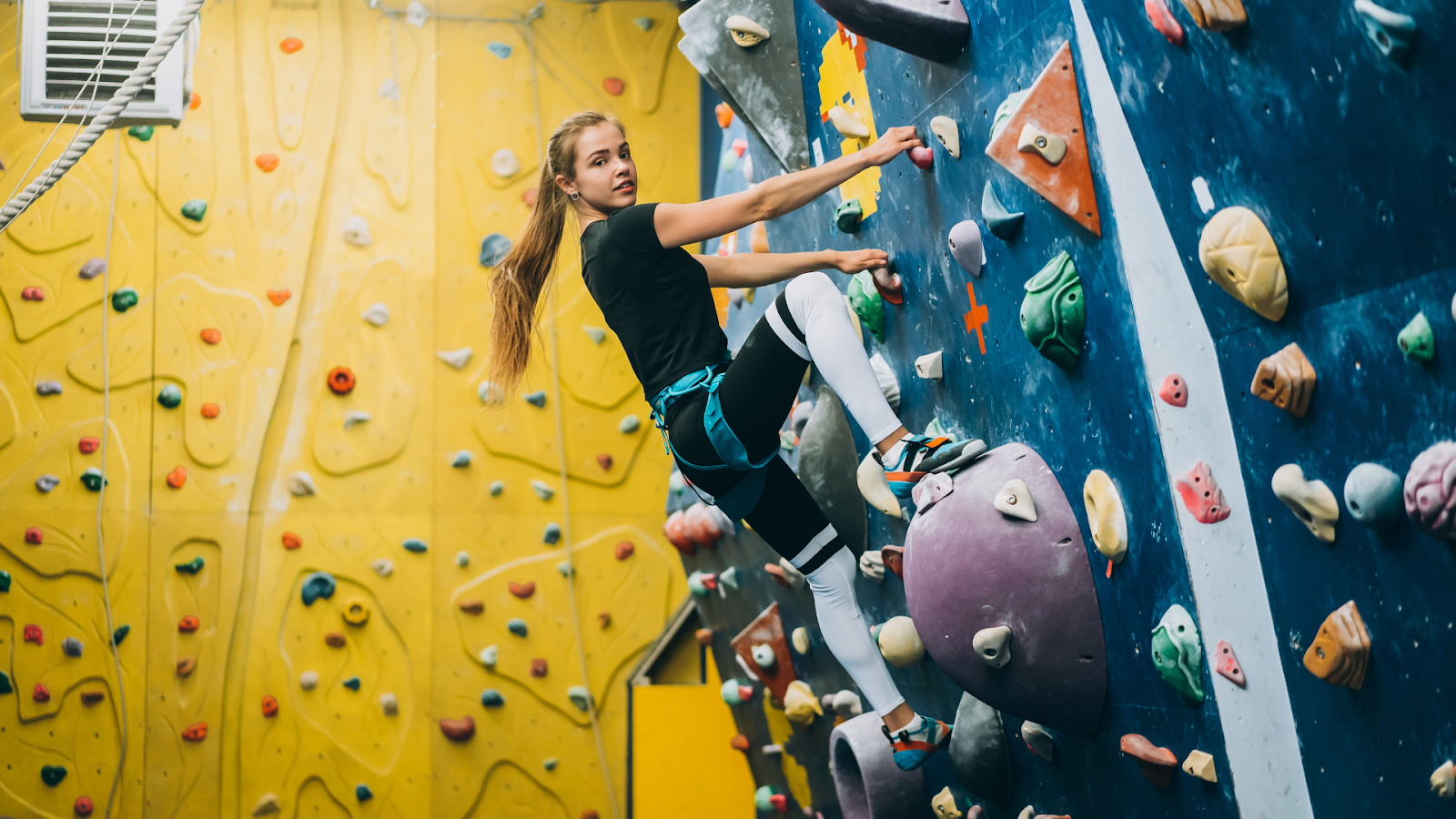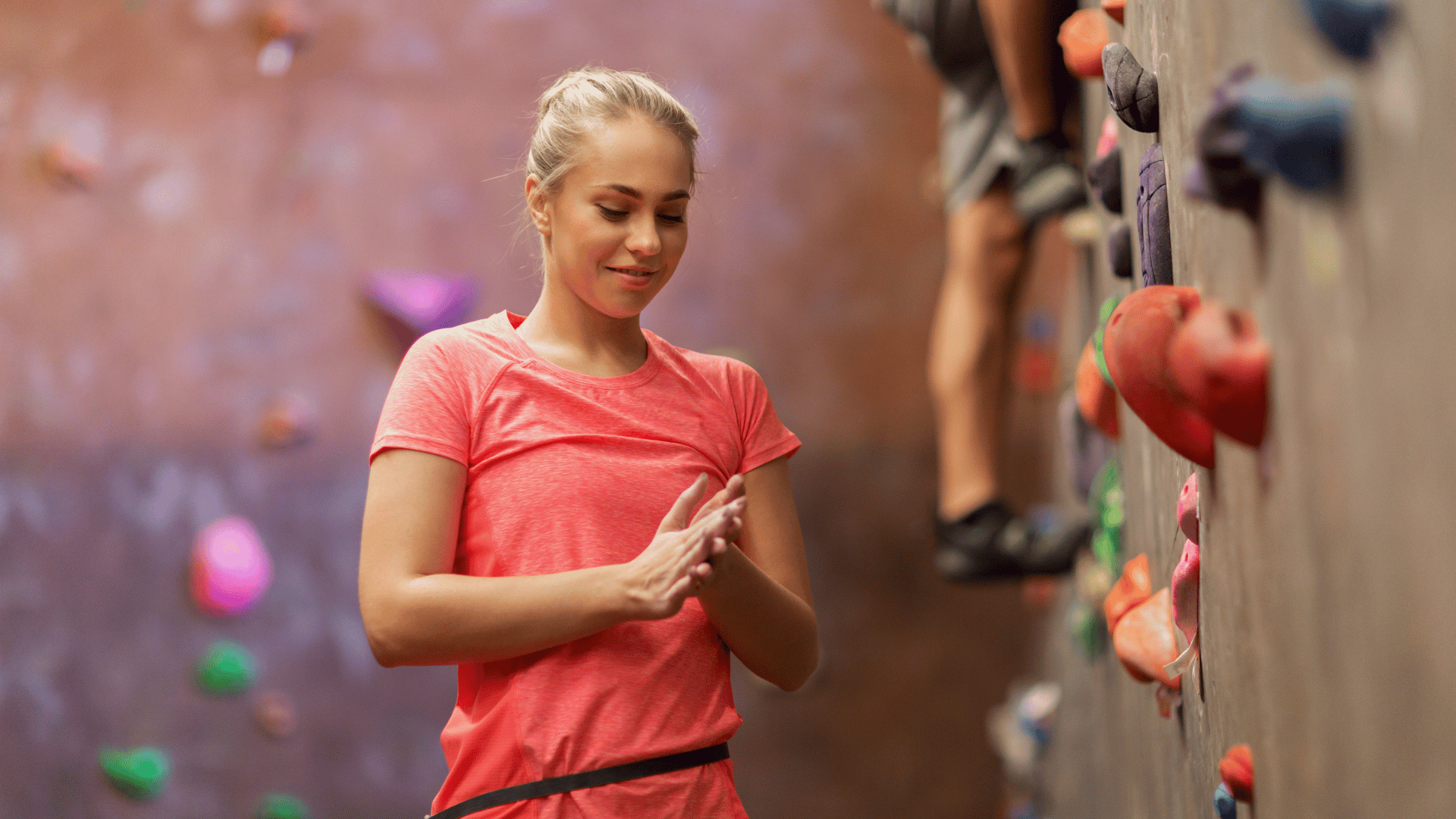At first glance, climbing and running may seem like two completely different sports, with little in common. One requires scaling walls and using upper body strength, while the other demands pounding the pavement and focusing on leg power and endurance.
However, the truth is that indoor rock climbing and running complement each other in surprising and powerful ways. If you're a runner—whether you're a marathoner, sprinter, or casual jogger—climbing can provide unique physical and mental benefits that can make you a stronger, more efficient athlete.
In this article, we’ll dive into how climbing can enhance three crucial aspects of running: leg strength, core stability, and mental endurance. Understanding how these elements translate from the climbing wall to the running track will help you unlock new levels of performance, no matter your running goals.
1. Building Leg Strength for Power and Endurance
When you think about running, especially long-distance running, you probably associate it with strong legs. But running alone doesn’t always strengthen all of the muscles that contribute to performance.
While running builds cardiovascular endurance and works the major muscle groups, such as the quadriceps, hamstrings, and calves, it can leave certain muscle groups underdeveloped. That’s where rock climbing comes in.
Glute Engagement: Strengthen Key Muscles for Better Running Form
The glutes, or your butt muscles, are crucial for maintaining proper running form, particularly for preventing common injuries like knee pain and IT band syndrome. Runners often have underdeveloped glutes because running doesn’t emphasize their use as much as climbing does.
On the climbing wall, every step upward requires you to push through your glutes, effectively strengthening this muscle group and improving your running form.
Leg Muscle Balance: Enhancing Stability and Power
Indoor climbing also develops the quadriceps and hamstrings differently than running, which often emphasizes repetitive motion in one plane of movement.
The varied angles and force required to maintain balance on a climbing wall help build balanced leg strength that translates into a more stable and powerful running stride.
Climbing for Endurance Athletes: Boosting Slow-Twitch Muscle Fibers
Climbing isn’t just about brute strength—it also demands endurance. When you’re on a long climbing route, your muscles are engaged in both isometric contractions (holding your body in position) and dynamic movements (reaching for the next hold or pushing off from a foothold).
This dual engagement helps develop slow-twitch muscle fibers, which are key for endurance athletes like distance runners. These fibers support sustained efforts over time, meaning that the more you climb, the longer you can run without fatigue.
Explosive Movements for Sprinters: Power Boost for Acceleration
For sprinters, climbing also offers unique benefits. The explosive, plyometric movements required to push off the wall mimic the kind of short, powerful bursts of energy needed to get off the starting blocks quickly.
This can help improve a sprinter’s acceleration and overall speed. Whether you're aiming for distance or speed, rock climbing can help build the leg strength and muscle balance you need to excel in running.
2. Enhancing Core Stability for Better Running Form
If there’s one aspect of running that’s often overlooked, it’s core strength. Your core muscles—those in your abdomen, back, and pelvis—play a crucial role in maintaining proper running form and preventing injury.
A strong core stabilizes your body as you run, helping you stay upright and aligned, especially during long runs or challenging terrains. However, running by itself doesn’t always engage your core muscles as effectively as other activities, such as rock climbing.
Why Core Stability Matters in Running
Climbing requires a tremendous amount of core strength to keep your body balanced and stable on the wall. Whether you’re reaching for a handhold or trying to balance on a small foothold, your core is constantly engaged to prevent your body from swinging or tipping off the wall. This consistent core activation is one of the reasons climbing is such an effective full-body workout.
Improved Posture and Alignment for Endurance
For runners, a strong core helps maintain an upright posture during long runs, preventing energy-wasting movements like excessive torso rotation.
If your core is weak, your upper body may start to twist as you run, which can throw off your balance, strain your lower back, and ultimately slow you down. Climbing helps strengthen the muscles that allow you to maintain proper alignment, even as you start to fatigue.
Better Balance and Coordination for Trail Runners
In addition to core stability, rock climbing enhances your overall balance and coordination. Climbing requires you to constantly shift your weight and adjust your body position to stay on the wall.
This improves your proprioception, or your body’s ability to sense its position in space. Proprioception is critical for runners, especially those who enjoy trail running or running on uneven surfaces. The better your sense of balance and coordination, the more efficiently you can navigate challenging terrains, avoiding stumbles and falls.
3. Developing Mental Endurance and Focus
Running is not just a physical activity—it’s a mental one, too. Whether you’re training for a marathon or trying to push through a difficult workout, mental toughness is just as important as physical endurance.
The ability to stay focused, overcome fatigue, and push through discomfort is key to running success. Rock climbing, with its unique combination of problem-solving and physical exertion, can significantly enhance a runner’s mental endurance and focus.
Problem-Solving and Focus in Climbing: Mental Training for Runners
Climbing is often described as a puzzle that requires both mental and physical effort. Each route on the climbing wall is a problem that must be solved: which hold to grab next, how to position your body, and how to conserve energy for the most challenging moves.
This intense mental focus is excellent training for runners, especially those who compete in long-distance events.
Staying Calm Under Pressure: Mental Skills for Tough Runs
Runners frequently encounter moments of doubt and exhaustion, especially during the final miles of a race or long run. The mental skills developed through climbing—staying calm, focused, and present—are invaluable when it comes to pushing through these tough moments in running.
Just like in climbing, where you have to focus on each individual move, runners benefit from the ability to stay in the moment and not get overwhelmed by the distance ahead.
Managing Energy and Pacing Yourself
Climbing also teaches athletes how to manage their energy and pace themselves. On longer climbing routes, climbers must conserve energy and remain mentally engaged without rushing.
This parallels the pacing strategies used by long-distance runners, who need to manage their energy throughout a race, avoiding the temptation to start too fast and burn out before the finish line.
Practicing Mindfulness: Staying Present in the Run
Additionally, climbing forces you to be present and aware of your body’s movements, a meditative practice that translates well to running. Mindfulness is a powerful tool for runners, helping them manage the mental strain of long runs or difficult training sessions.
By focusing on each step, rather than the miles ahead, runners can reduce feelings of overwhelm and maintain a positive, engaged mindset.
Give Climbing a Try at Brooklyn Boulders
Climbing offers a unique and highly effective form of cross-training for runners. By building leg strength, enhancing core stability, and developing mental endurance, climbing can help runners improve their performance, reduce the risk of injury, and push through mental barriers. Whether you're a casual runner or a competitive athlete, incorporating climbing into your training routine can provide the edge you need to take your running to the next level.
Curious about how climbing can improve your running? Stop by Brooklyn Boulders and give it a try! Whether you’re new to climbing or just looking for a fun way to cross-train, our welcoming community and knowledgeable staff will help you get started. Visit Brooklyn Boulders today in New York or Chicago and discover how climbing can complement your running routine in a fun and supportive environment.




